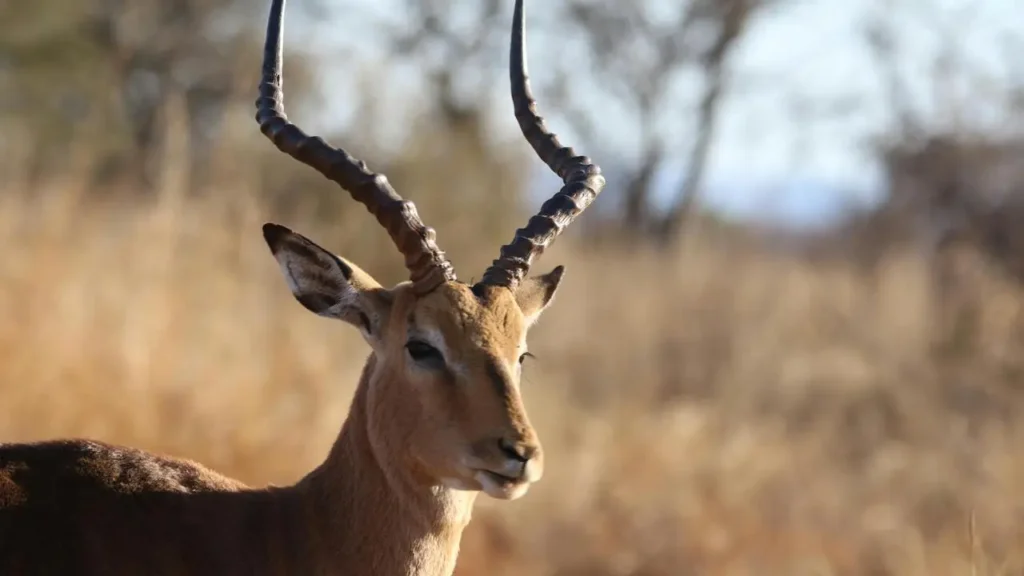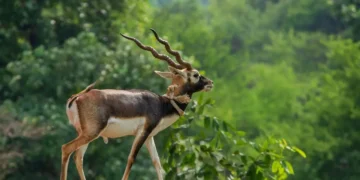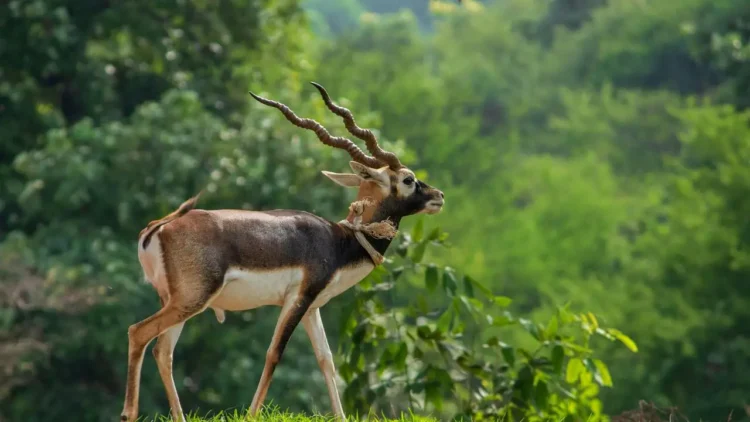The Four-Horned Antelope, also known as the Chousingha, is a fascinating and particular species that stands out in the animal kingdom. As its call shows, this uncommon antelope is outstanding by using its four horns, a feature that units it other than all other antelope species, which typically have the most effective two. Found more often than not in India and Nepal, the Four-Horned Antelope inhabits more than a few habitats, from dense forests to open grasslands. Let’s delve into the characteristics, habitat, behaviour, and conservation status of this amazing creature.
Characteristics of the Four-Horned Antelope

Read also: Travis Head Confirms Dynamic Opening Partnership with Warner for T20 World Cup Opener
The Four-Horned Antelope (Tetracerus quadricornis) is quite small, with adults normally weighing between 17 to 22 kilograms and standing about 55 to 64 centimetres on the shoulder. Its maximum striking characteristic is, of course, the presence of 4 horns. The front pair of horns is usually shorter, measuring around 3 to five centimetres, while the rear pair can grow up to ten centimetres. These horns are generally observed handiest in males, with girls normally being hornless.
The antelope’s coat is short and varies in colour from yellowish-brown to reddish-brown, imparting powerful camouflage in its natural habitat. The underparts are lighter, often white or pale, contrasting with the darker dorsal aspect. This shade allows it blend into the dry, scrubby environments it frequently inhabits.
Habitat and Distribution
The Four-Horned Antelope is native to the Indian subcontinent, with its variety extending throughout central and southern India and into elements of Nepal. It prefers hilly and undulating terrain where dense foliage and tall grasses offer cowl from predators. This antelope is adaptable and can be discovered in diverse habitats, along with dry deciduous forests, scrublands, and open savannas. It avoids dense forests and relatively arid regions, favouring regions with mild vegetation cover.
Behavior and Diet
The Four-Horned Antelope is generally diurnal, which means it’s very energetic all through the day, especially in the early morning and late afternoon. It is a solitary animal, with women and men coming together best at some stage in the mating season. The antelope’s weight-reduction plan consists especially of grasses, leaves, end result, and plant life. It is known to be a browser in place of a grazer, which means it feeds on a number of plant substances to be had at distinctive heights.
Despite its small length, the Four-Horned Antelope is remarkably agile and might move hastily via dense vegetation to get away from predators. Its primary natural predators encompass leopards, tigers, and wild dogs. The antelope is predicated closely on its eager senses of sight and hearing to stumble on danger and keep away from confrontation.
Conservation Status
The Four-Horned Antelope is presently listed as Vulnerable at the International Union for Conservation of Nature (IUCN) Red List. Its populace is declining due to numerous elements, which include habitat loss, poaching, and competition with farm animals. Agricultural growth and deforestation have brought about significant fragmentation of its habitat, making it extra difficult for those animals to discover food and mate.
Conservation efforts are underway to shield the Four-Horned Antelope and its habitat. Several blanketed regions and natural world sanctuaries in India, together with Bandipur National Park, Gir Forest National Park, and Kanha National Park, provide shelter for this specific species. Effective conservation techniques involve habitat healing, anti-poaching measures, and network involvement to make certain sustainable coexistence between people and wildlife.
The Four-Horned Antelope, or Chousingha, is a first-rate species that showcases the variety and surprise of the herbal international. With its four different horns and adaptable nature, it occupies a unique area of interest inside the ecosystems of India and Nepal. However, its status as a prone species highlights the urgent need for conservation efforts to guard its habitat and ensure its survival. By raising focus and enforcing powerful conservation practices, we can help hold this unique marvel of the animal nation for future generations to appreciate and recognize.
To get more out of our exclusive news, Join us on our WhatsApp Channel, Facebook, X, and Instagram.















